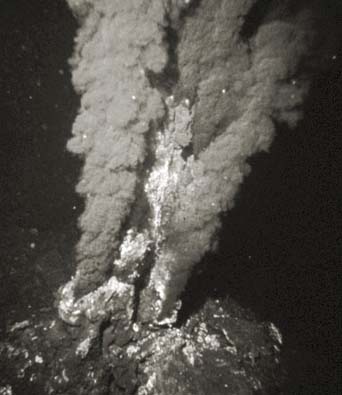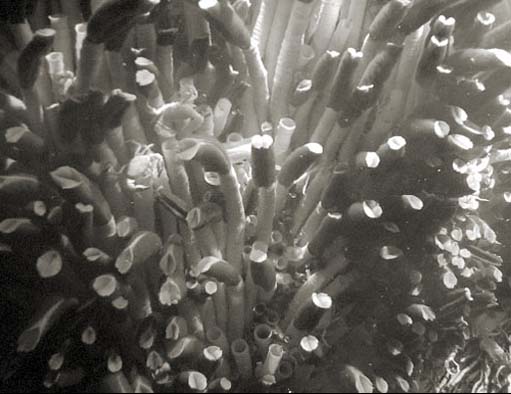2.3 Black smokers
I started with an ecosystem that is familiar and easy to visualise. Most people have seen a rockpool, if only on television. But many ecosystems remain undiscovered, and some of the ones we know about are full of mystery. The purpose of this section is to introduce one that was discovered fairly recently. Don't worry about the details. It's here as another example of how living things, a physical environment and a source of energy can combine to create an ecosystem.
It is probably true to say that we know less about the bottom of the deep sea than we do about the surface of the moon. However, we know that there are ecosystems down there that demonstrate the interaction between living things and extremes of the physical environment. They are unusual in that the main source of energy is not light from the sun but the heat from molten rock.

At certain points, sea water penetrates cracks in the ocean floor and comes into contact with the lava produced by active volcanoes. The heated water, full of minerals from the rock, rises rapidly to create plumes of hot water called hydrothermal vents (‘hydrothermal’ is just science-speak for ‘hot water’). The minerals in the super-heated water give it a cloudy appearance, which is why the vents are also known as ‘black smokers’ (Figure 2). The pressures at these depths mean that water temperatures of 300 °C can be found.
Despite the extremes of temperature and pressure there is life here. Bacteria live around the black smokers at temperatures of up to 110 °C, surviving on minerals and the heat energy in the hot water. Other animals feed on the bacteria and each other: blood-red giant tube worms up to three metres long, limpets, barnacles, prawns, crabs and fish. Most of these organisms are found nowhere else on Earth.

